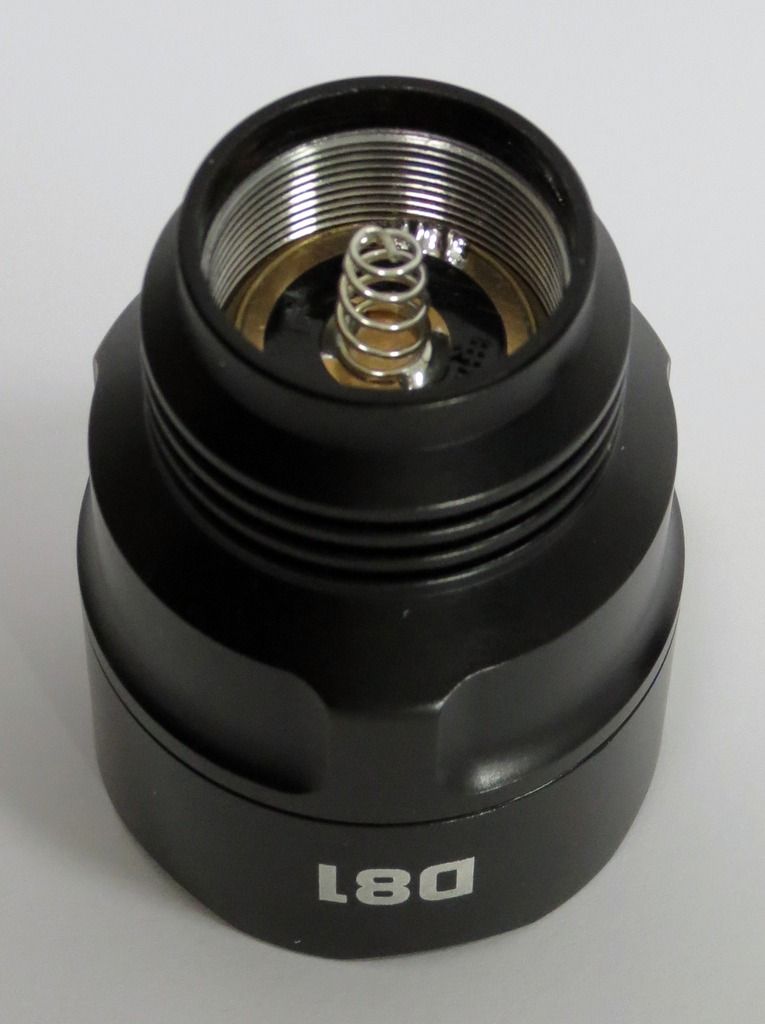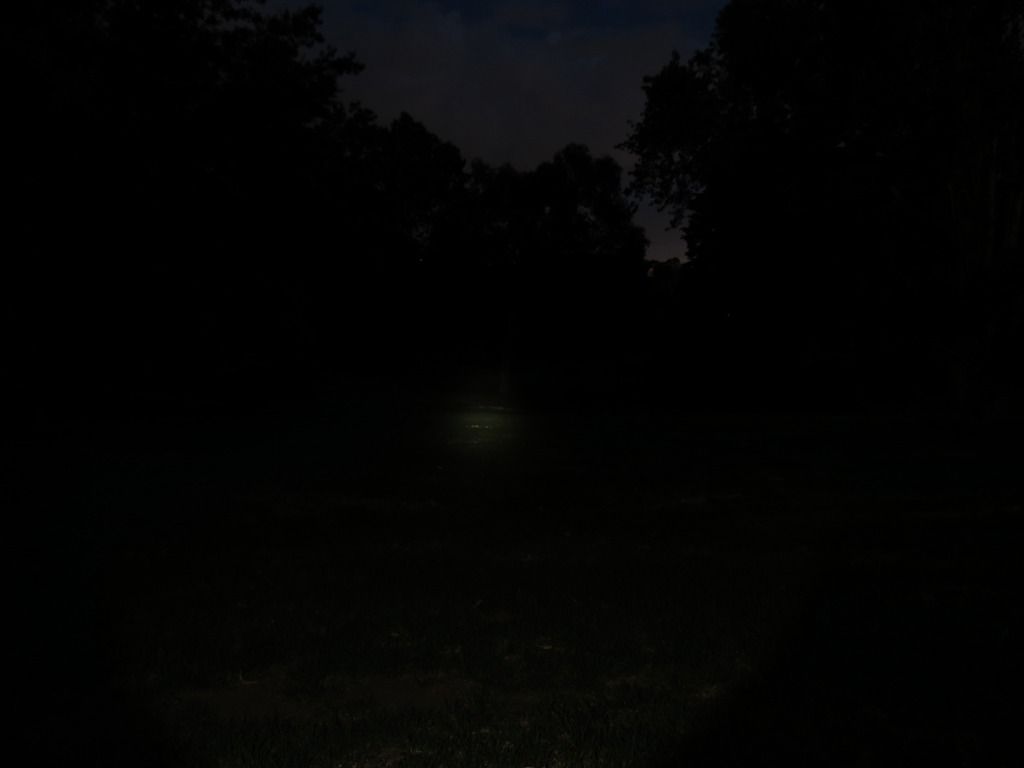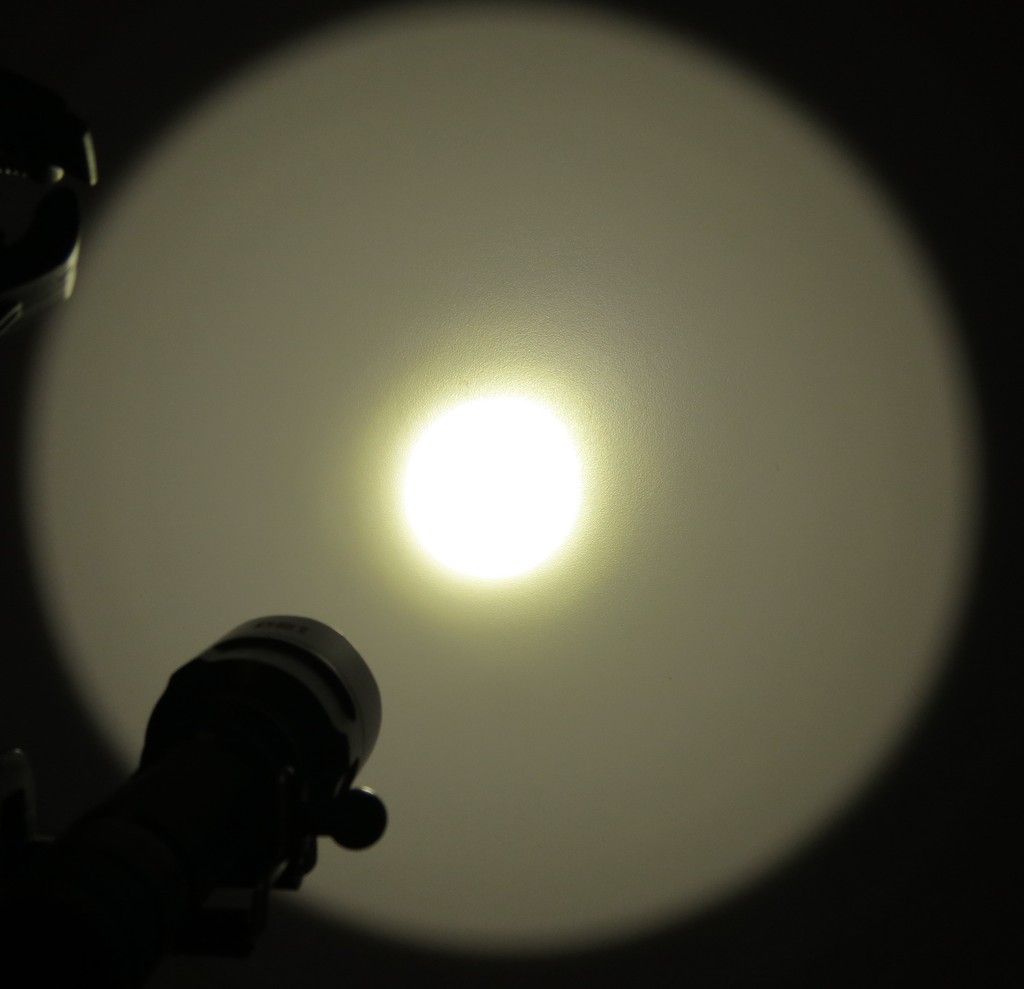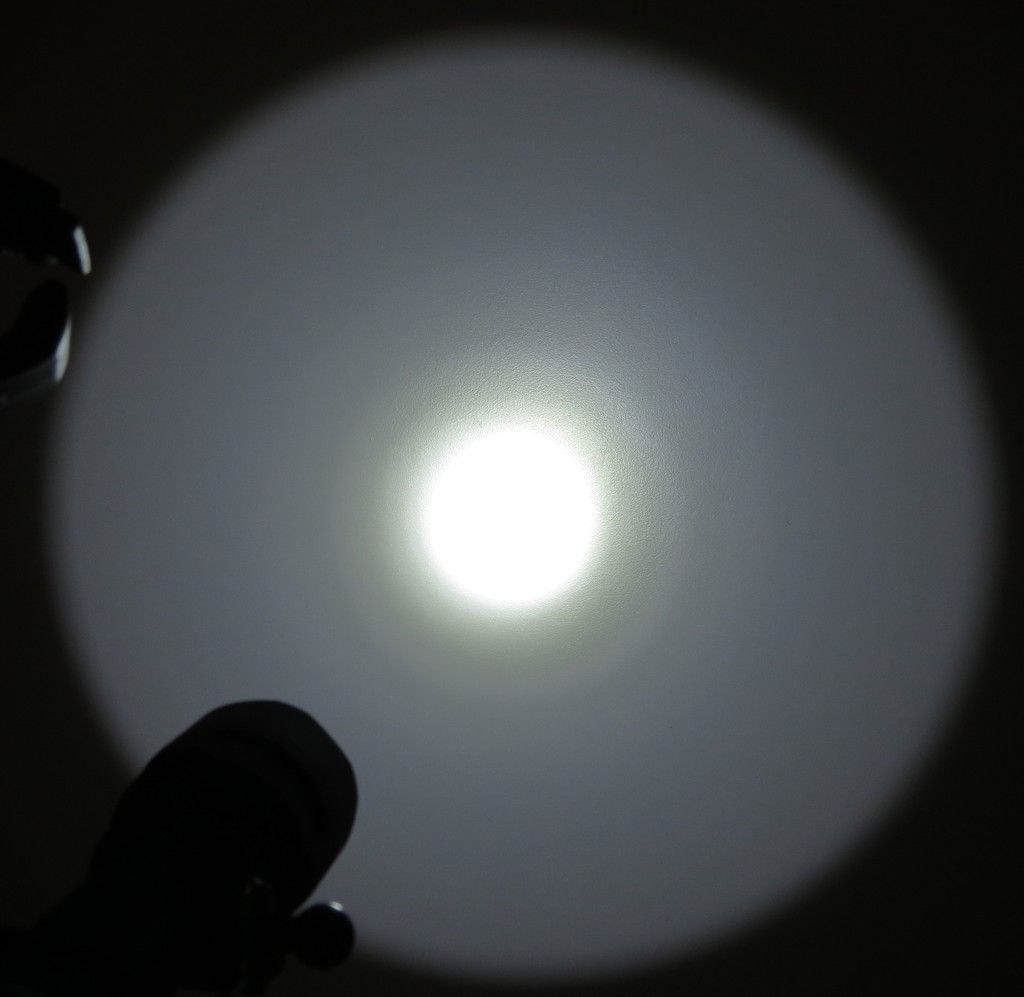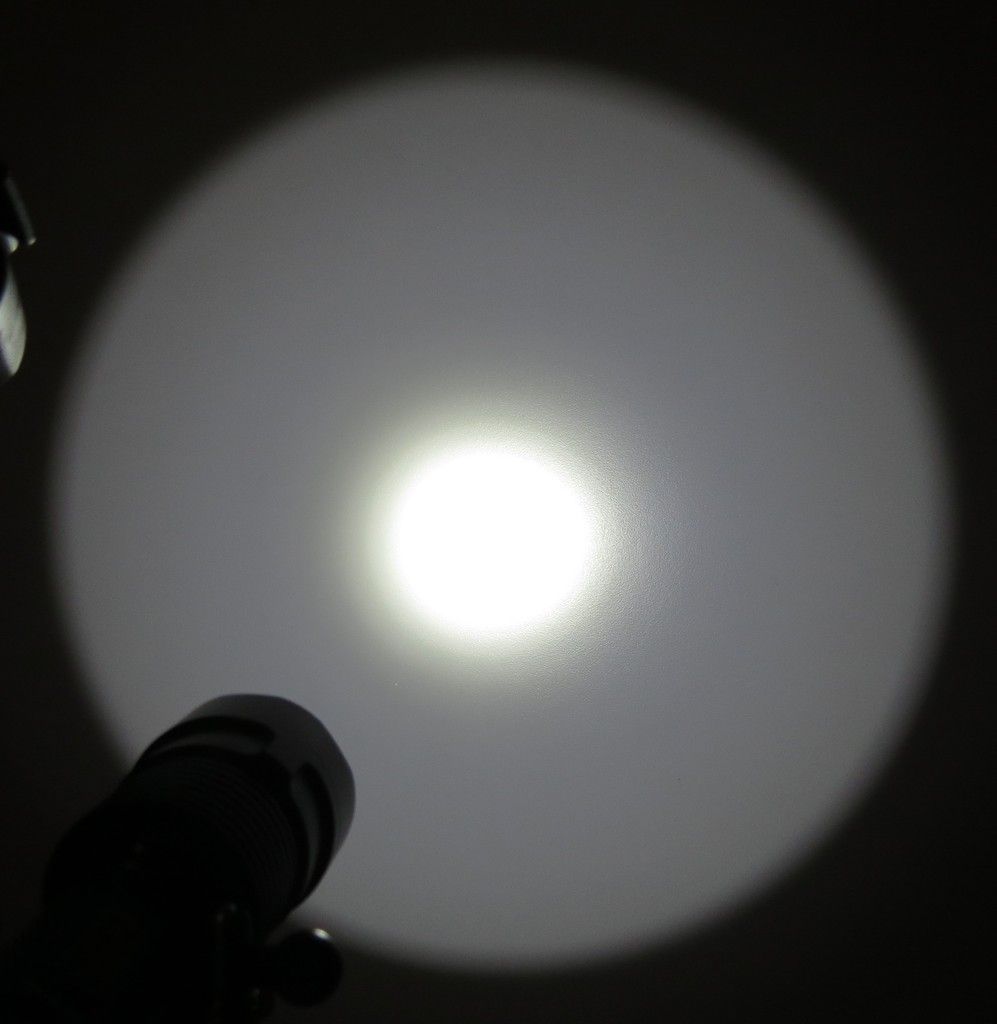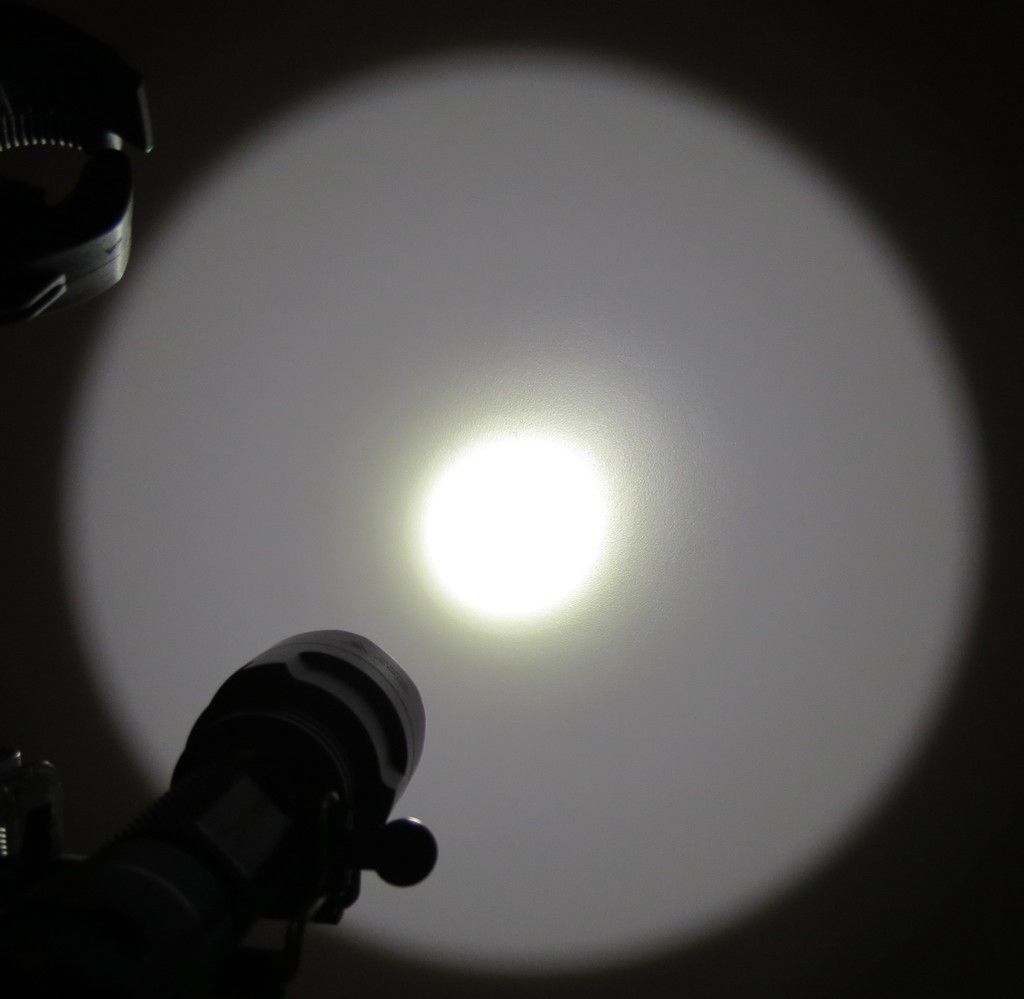KD Qualilite D81 C8 XPL-HI V2 4500k 18650/CR123 Flashlight Review
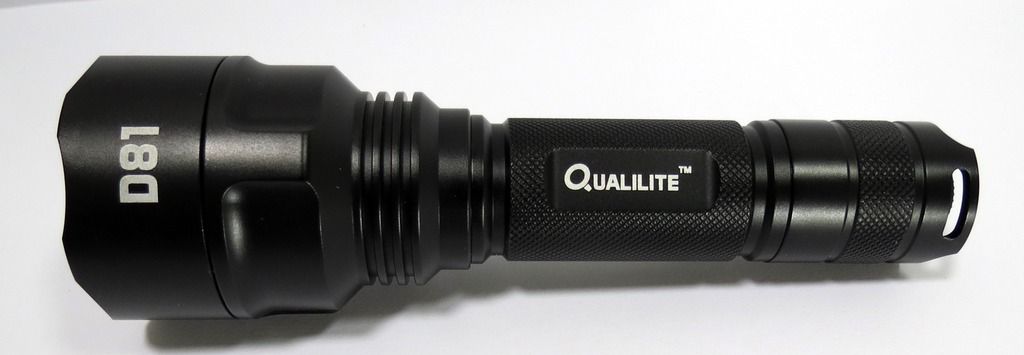
The Kaidomain team provided me with a new product soon to be released. This is the Qualilite D81, which is based on the very popular C8 design. In the past I've reviewed C8 and C12 models sold by KD and have been very impressed with the high performance. Interestingly here we have a feature I've not yet come across that being a C8 that can utilise either a 18650 or 2x CR123 batteries. The D series describes the "Dynamic" range.
The model tested here has a 4500k LED, it is understood that on release cooler LEDs will also be available.
Qualilite doesn't seem to be a well known brand, and I've not seen any products in the past from this company. The brand name isn't great, however for me what is more important is the performance and quality of the product.
This flashlight promises much with the XPL-HI LED and it was an interesting exercise to review to see how well it performs.
Just prior to completing this review the flashlight has been posted on the Kaidomain site, on sale for $28.69.
The link to the two versions are below,
Sellers/Manufacturers Specs
| Brand: | Qualilite |
| Model: | D81 |
| Flashlight Material: | HAIII Hard Anodization Aerospace Aluminum |
| Flashlight Color: | Black |
| Emitter Brand/Type: | CREE |
| Emitter BIN: | XP-L HI V2 |
| Color BIN: | White 4500K |
| Total Emitters: | 1 |
| Battery Configurations: | 1 x 18650 / 2 x CR123 rechargeable Ii-ion batteries (not included) |
| Voltage Input: | 2.7V - 8.4V |
| Switch Type: | Tactical Forward Clicky |
| Switch Location: | Tail Cap |
| Modes: | 2 Groups of 3-Mode or 5-Mode |
| Mode Memory: | Yes |
| Mode Arrangement: | Group 1: Lo > Med > Hi Group 2: Lo > Med > Hi > Strobe > S.O.S Operation(s): How to switch between Group 1 and Group 2? Cycle through the same group for 3 times (continuously) and then change to another group. i.e. Group 1 to Group 2 Lo > Med > Hi > Lo > Med > Hi > Lo > Med > Hi > (Group 2) Lo > Med > Hi > Strobe > S.O.S i.e. Group 2 to Group 1 Lo > Med > Hi > Strobe > S.O.S > Lo > Med > Hi > Strobe > S.O.S > Lo > Med > Hi > Strobe > S.O.S > (Group 1)Lo > Med > Hi |
| Brightness: | 1000 Lumens Maximum Brightness (manufacturer rated) |
| Runtime: | Hi: 90mins (Tested by Qualilite 3500mAh 1 x 18650 battery) |
| Lens: | Multi-Layer Coated Glass Lens |
| Reflector: | Aluminum Textured / SMO Reflector |
| Carrying Clip: | - |
| Carrying Strap: | Yes |
| Other Features: | 1. Constant Current 2. Tail Standard 3. Waterproof IPX-8 Standard 4. Battery Reverse Polarity Protection |
| Dimension: | 148mm (L) x 48mm (Dia. of Head) x 28mm (Dia. of Body) |
| Weight: | 181g (not include battery) |
Package Includes:
1 x Qualilite D81 Flashlight
1 x Lanyard
1 x Micro cloth
First Impressions and Unboxing
The flashlight box arrived in a padded envelope and wrapped in bubble wrap. As the box isn't very durable it suffered some minor crushing during transport. Fortunately no damage occurred to the contents.
The packaging of the flashlight is good and more a step up from what is normally provided with a standard C8. Bottom right on the front of the box is displayed some images that describe, the lumen performance (1,000), throw distance (420m), max run time (80hrs) and safe dropping height (1.5m). The packaging suggests that the LED is a CREE XPL-HI V3, however as per the Kaidomain site which it is a V2.
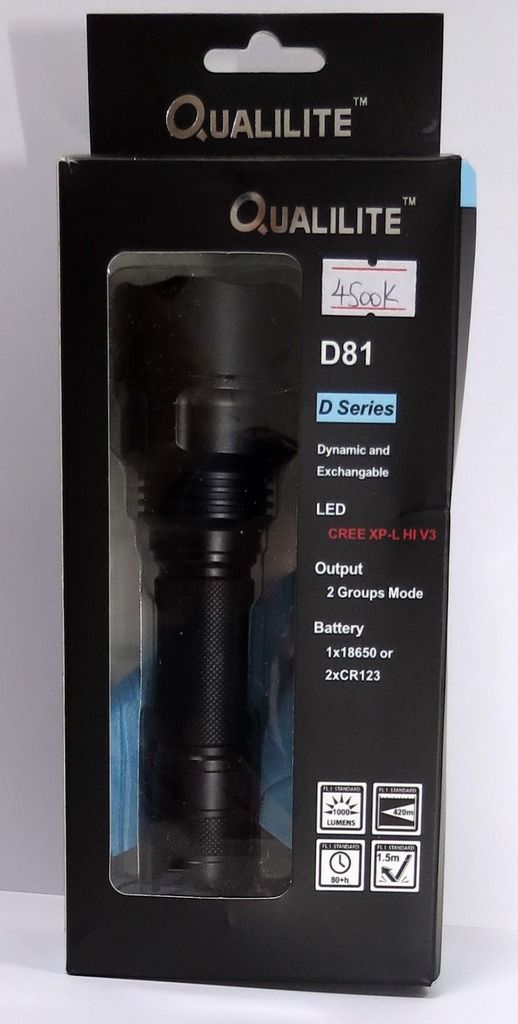
Looking at the back of the box we see a description of the product. Much of the features I've listed earlier in this review. On the back of the box is the company's url, www.qualilite.com. I attempted to view this site to learn more about Qualilite but found the site/domain name is inactive. Seems odd, however it may suggest that they are new.
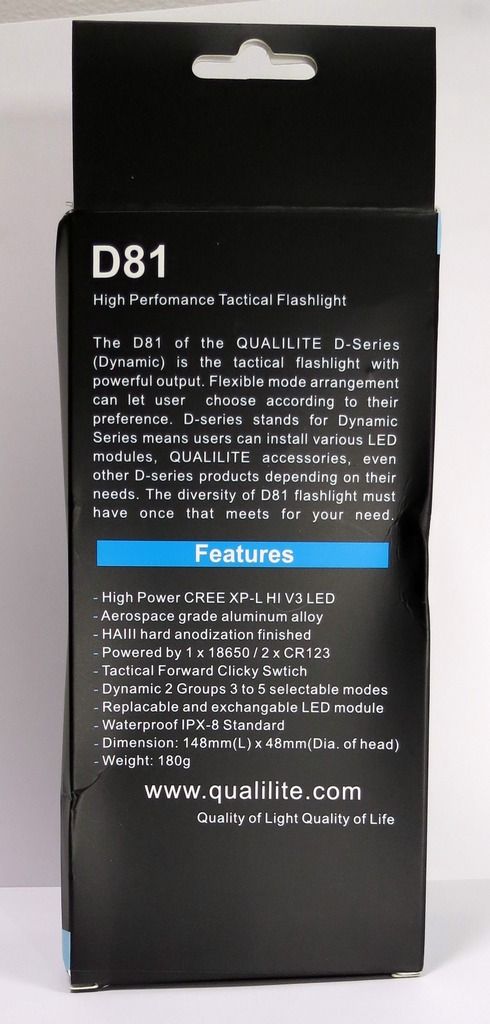
Inside the box is included the flashlight host, nice lanyard and a microcloth, with the Qualilite branded label. The quality of the flashlight host is noticeable from the start, somewhat shiny finish with no blemishes at all. Instructions are not included. The back of the box describes the features but there isn't any description of the various modes and how to move between each group.
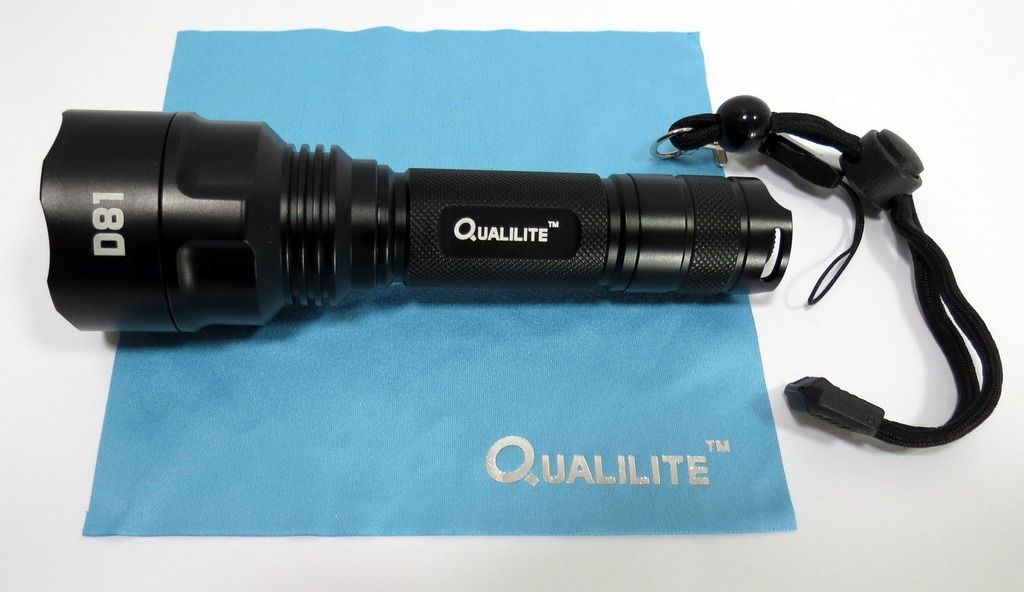
The D81 host externally looks stock like a stock standard C8 with the exception of the tail cap which has a scalloped design. In the image below the Qualilite is 2nd from the left. The lineup includes,
Convoy C8, Qualilite D81, KD C12, KD C8 and an Olight S30 for something different. The finish on the D81 is smooth, very different from the Convoy which has a matt coating.
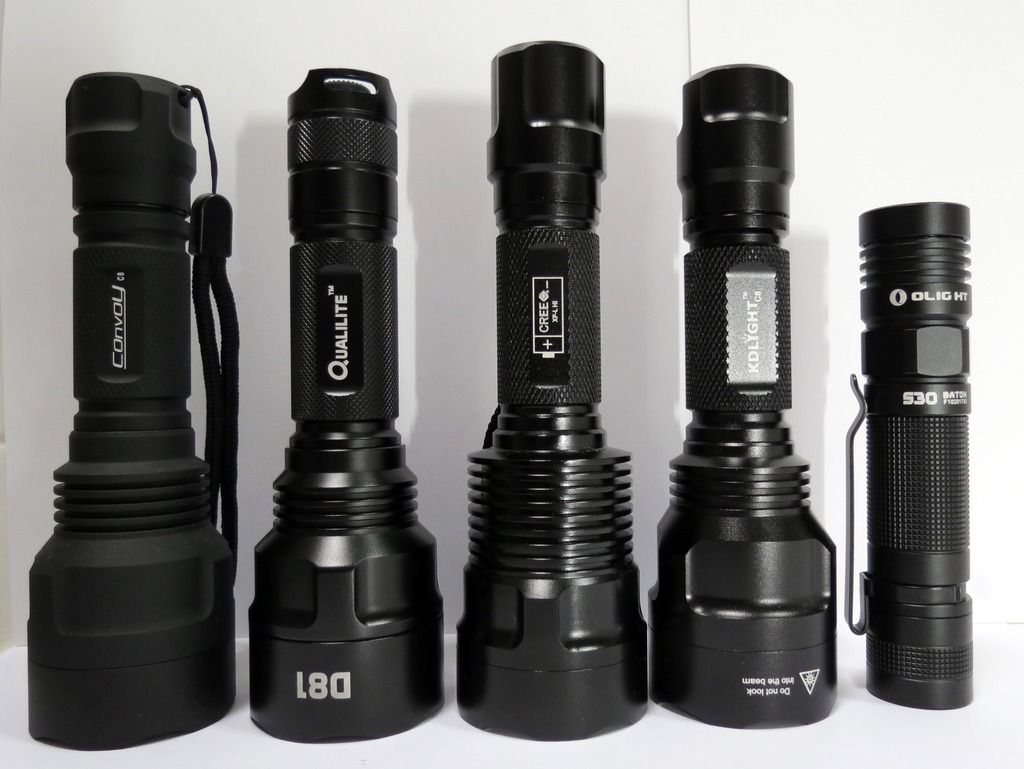
Flashlight Build and Disassembly
This design can tail stand! The tail design is well designed with a slightly recessed button. The body design is very typical of a standard C8 with the exception of the tail. More details on the tail cap are presented later in this review. The D81 model is printed clearly on the head along with the Qualilite branding on the body. On the other side of the head is printed a symbol and text "Do not look into the beam". On the body a label of "D Series" appears. The quality of the printed labels is very good. overall the immediate reaction to seeing and handling the assembled host is that its very well made product. It's a very good quality C8 clone.
There is a bit of weight to the flashlight too. Weighing in at 180 Grams its at the high end of the scale for C8's. By way of comparison it weighed noticeable more than a Convoy C8 (150g), KD C12 (169g) and a KDLight C8 (165g). Having seen very light C9's in the past this extra weight is a positive as it suggests more Aluminium in the components. Most likely some of this is in the reflector as we'll see later.
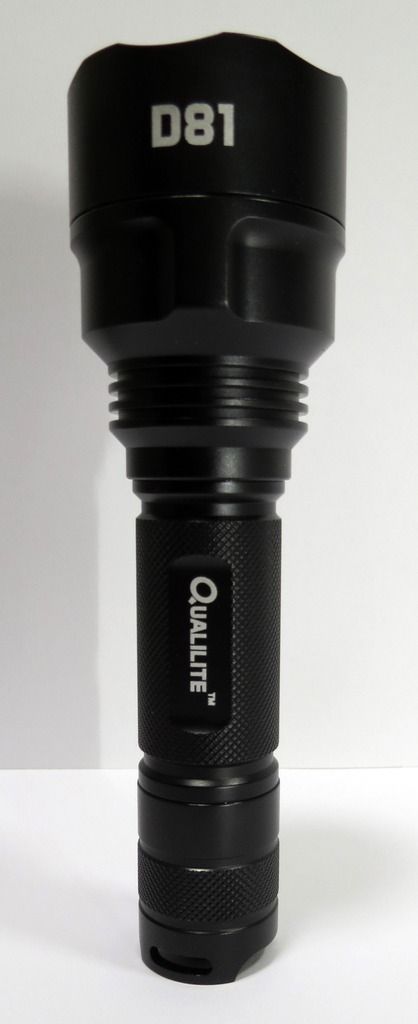
A look at the LED and smooth reflector. Not obvious from the photo but the reflector looks super smooth and well made. The XPL-HI LED is perfectly centered too.
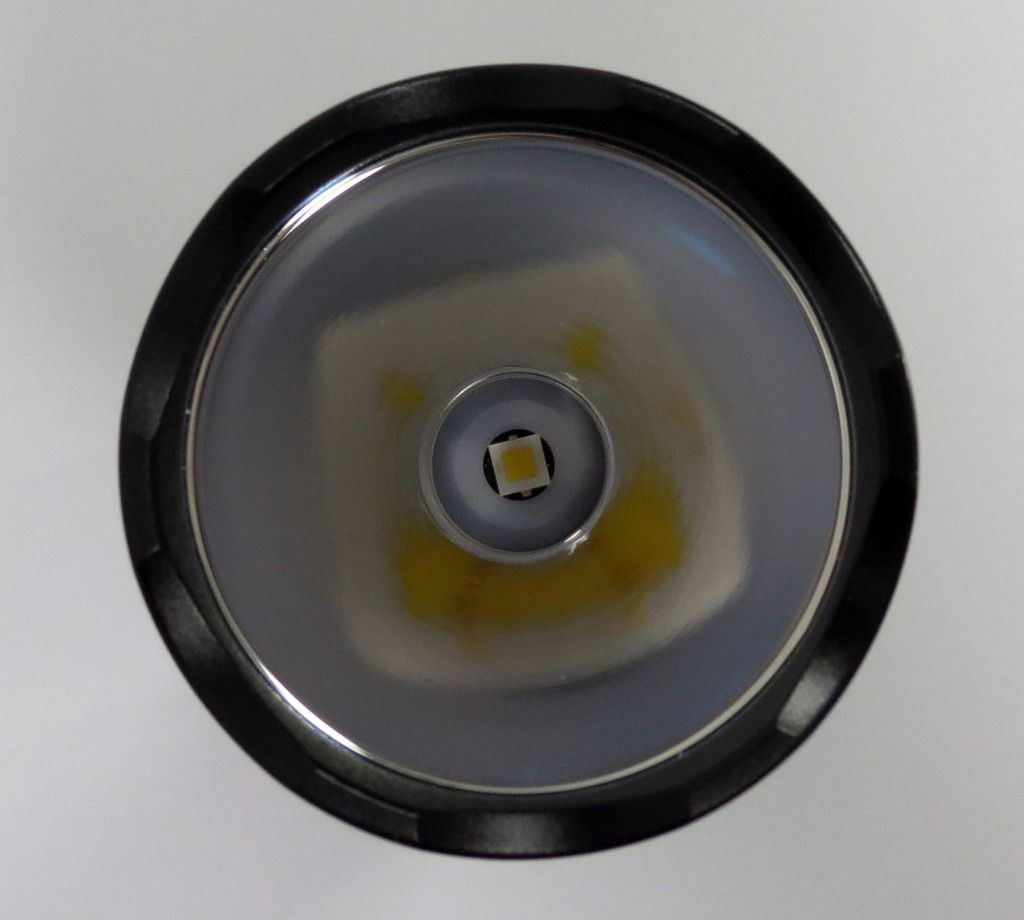
Having removed the head from the body we see here the back of the driver board and positive terminal spring. No voltage regulators to be seen on this side. Spring appears to be nickle plated. The soldering is a bit rough.
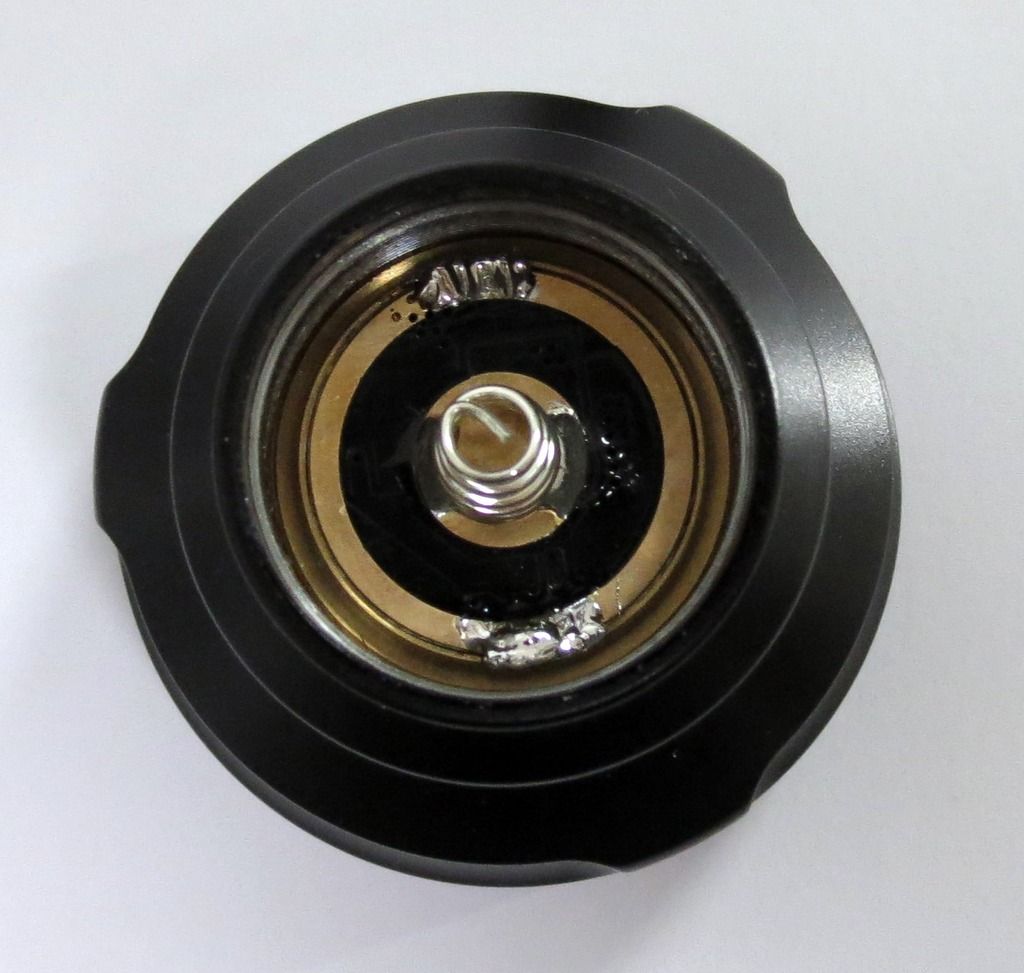
Another view of the bottom of the head assembly.
Tail cap. This is a nice design with a very slightly recessed button which allows for tail standing. Excellent design, that allows for tail standing and easy access to switch and fitting of a lanyard.
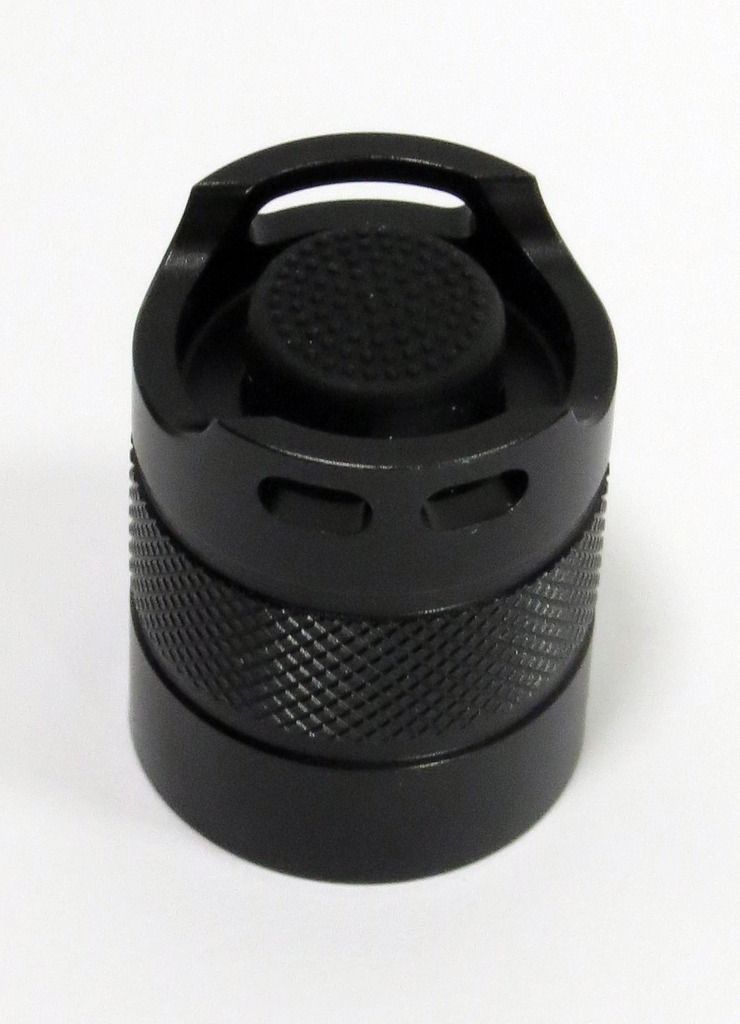
Middle section of the flashlight body. Nice square threads that were lubed by the manufacturer. O rings too at either end. The knurling is good although the grip is a little slippery.
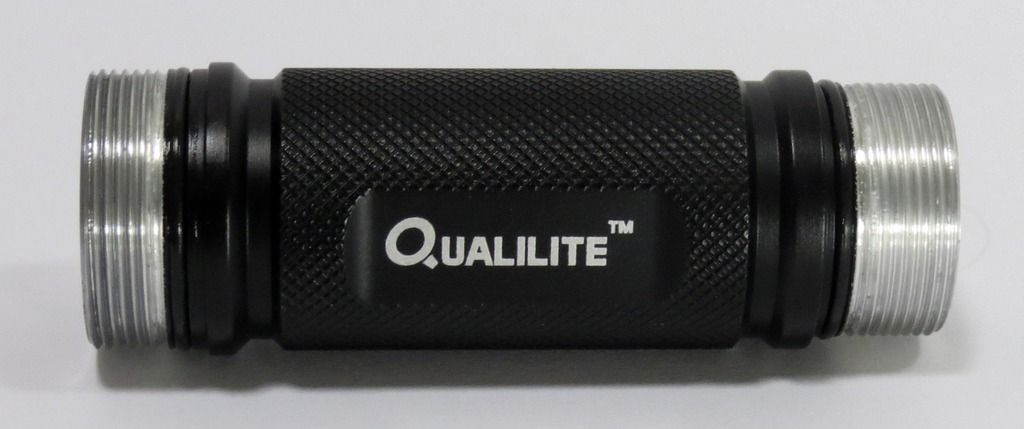
Head section dissembled. This is easily achieved but the reflector is attached very strongly to the pill section. Using a good level of force I wasn't able to unscrew the brass section from the reflector. Initially I thought it was glued in however others have found it's not but requires much effort to unscrew.
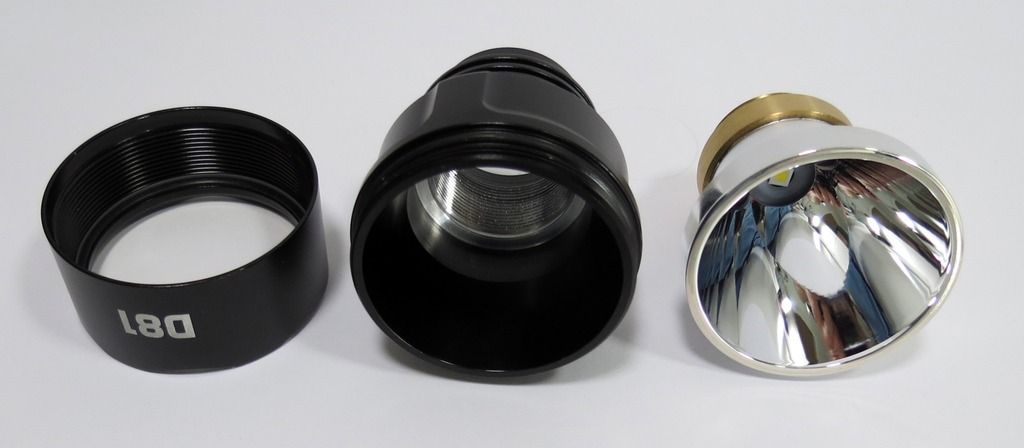
Another view of the head section with the inner reflector and pill removed.
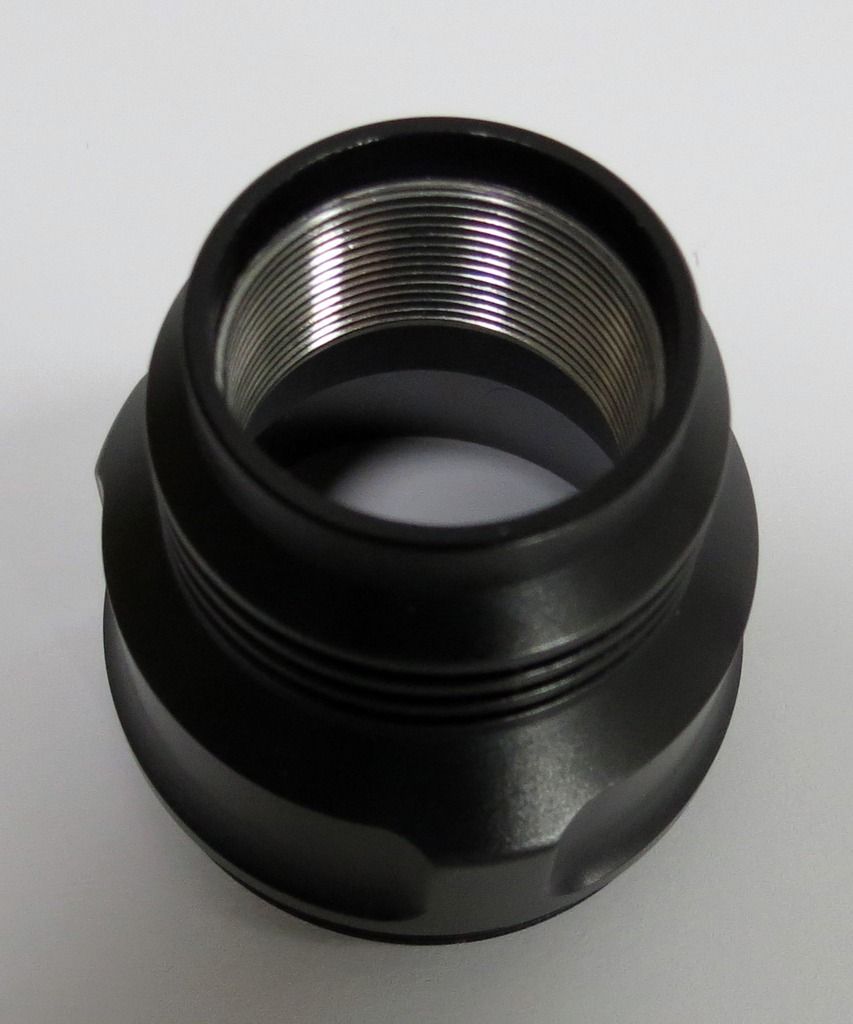
Side view of the reflector with brass pill. The reflector is very well made and is quite a change from the thinner walled units used in most C8's. This is where some of the weight increases apply as this combined component weighs 50g!
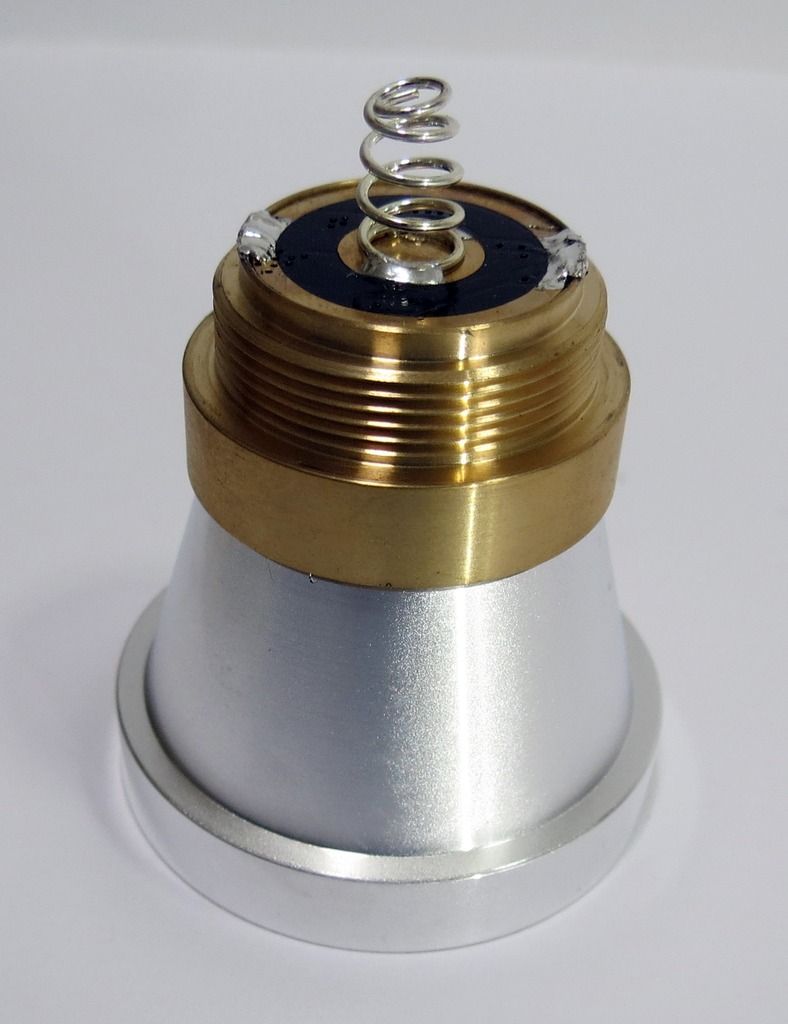
Inside view of the tail section. The spring is inside the brass cap.
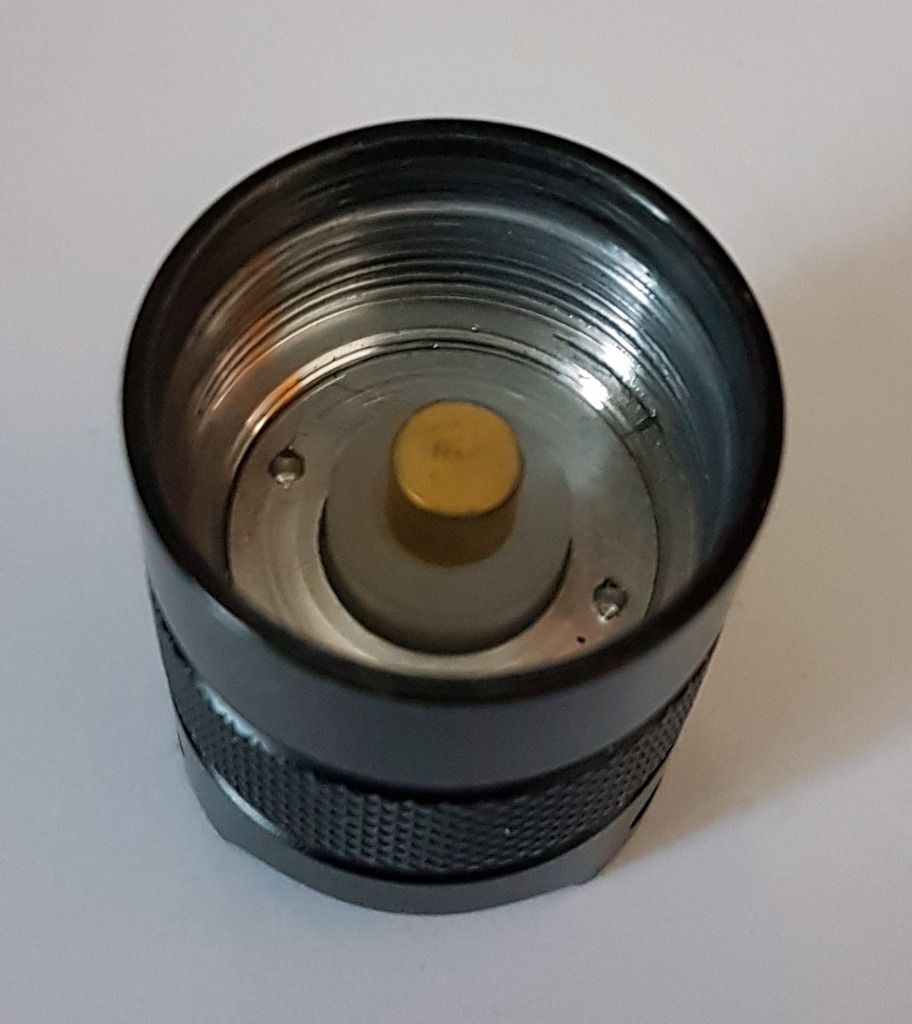
Tail section dissembled to show the switch and parts. Straightforward task to disassemble.
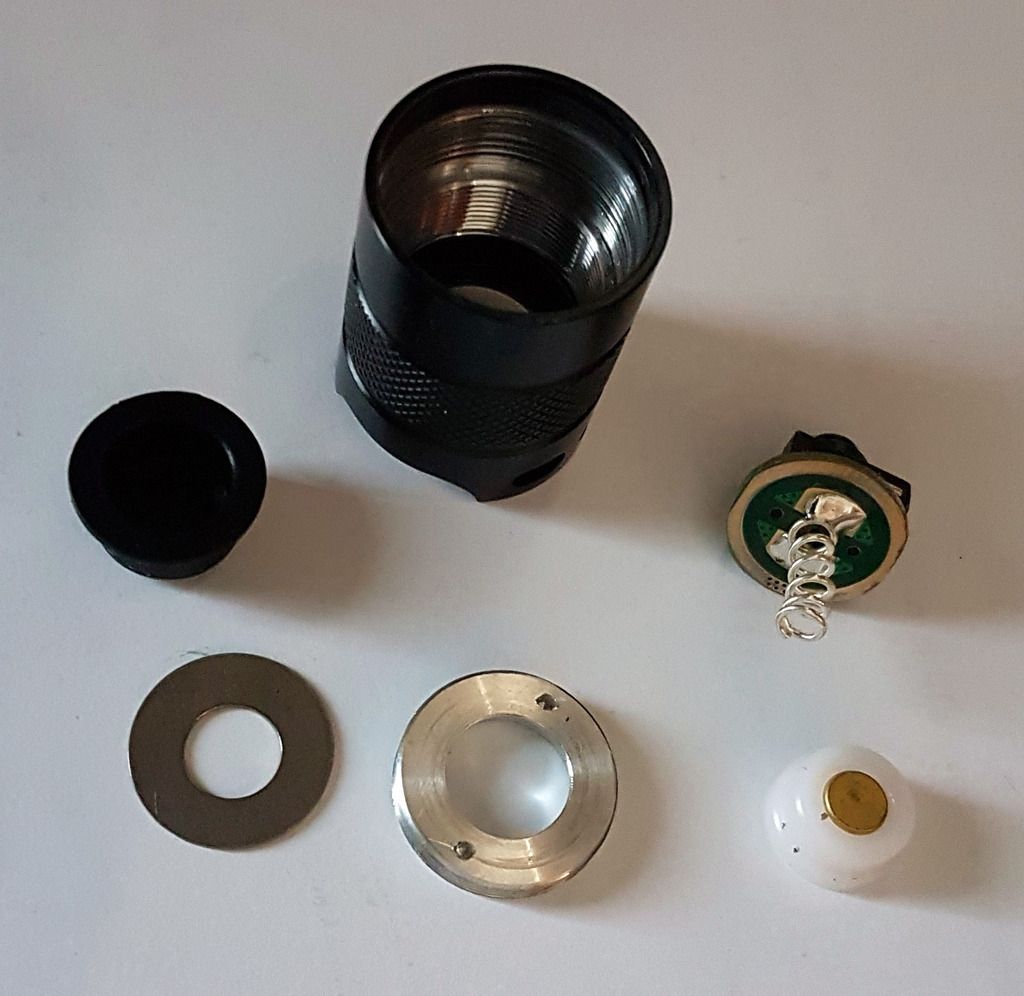
Close up view of the switch.
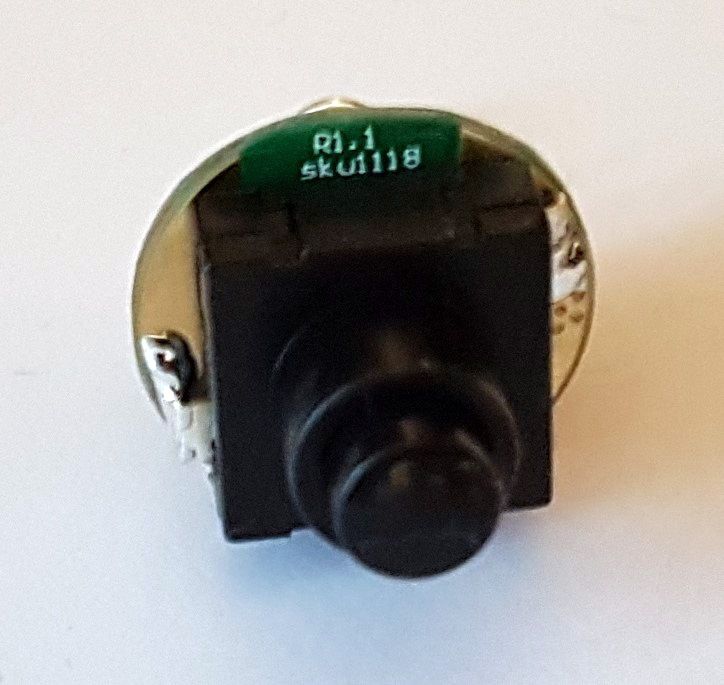
The glass coated lens is coated
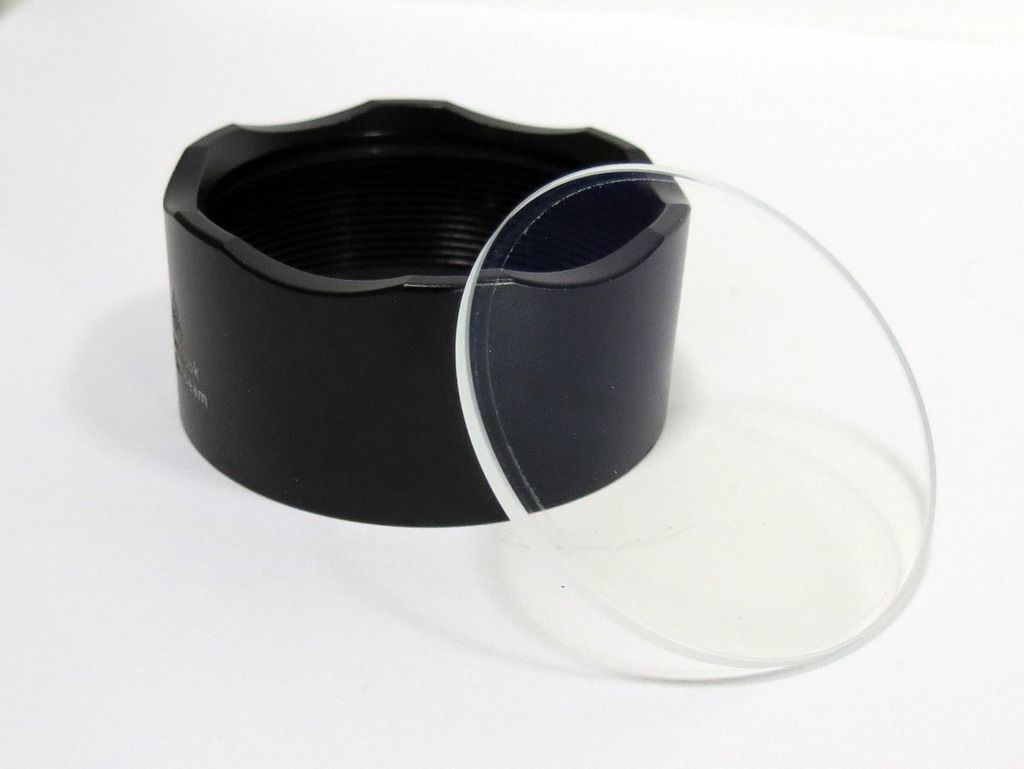
Beam Shots
All photos taken with the following Camera settings. F 2.7, Shutter 1/160 ISO 100
The reflector being smooth results in a more defined hot spot. This is seen in the images below.
Low
I'd estimate the brightness here at around 10% of HIGH. The hot spot is clear although not sharp. Some yellowish haze around the hot spot, but only obvious when shining on a white surface at a short distance.
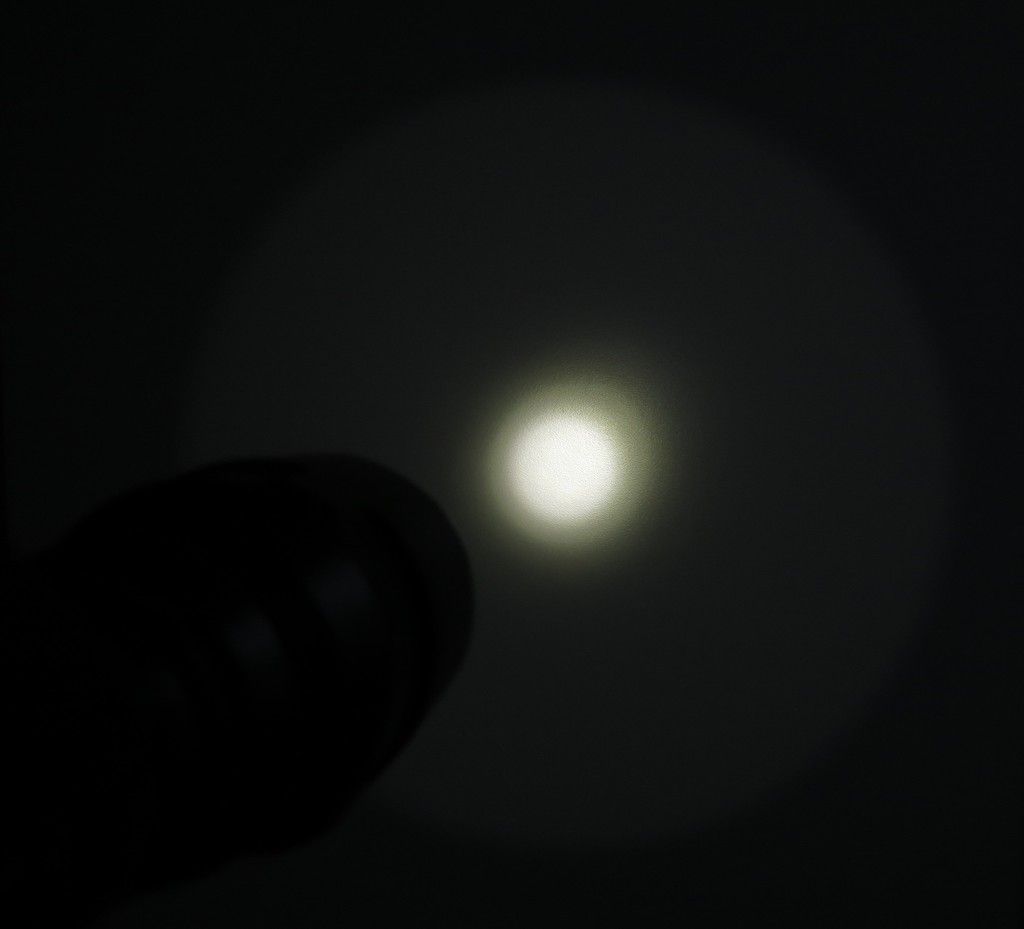
Medium
Approximately 35-40% of HIGH. Again somewhat of a very faint yellow coloring around the hotspot.
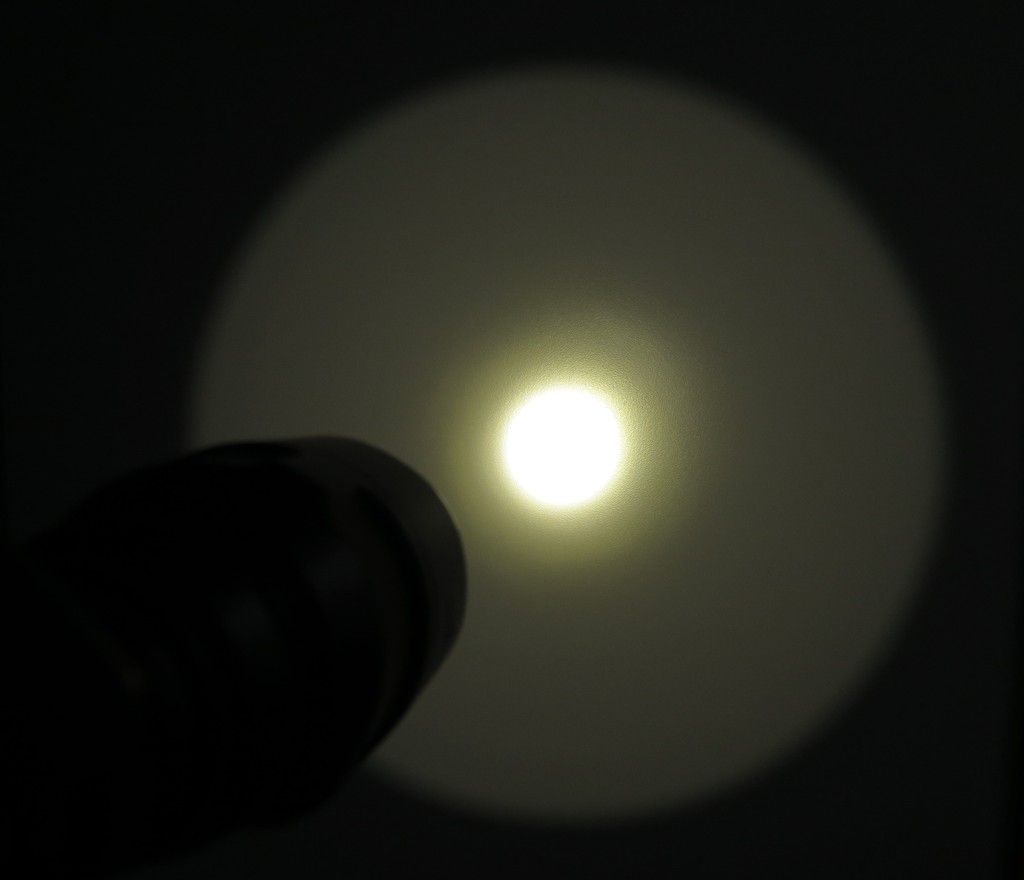
HIGH
The yellow haze/donut appears around the hot spot. The spill is very even. There is a bluish donut around the outer edge of the beam. I mention these imperfections but not really a concern. Overall a very nice beam spot.
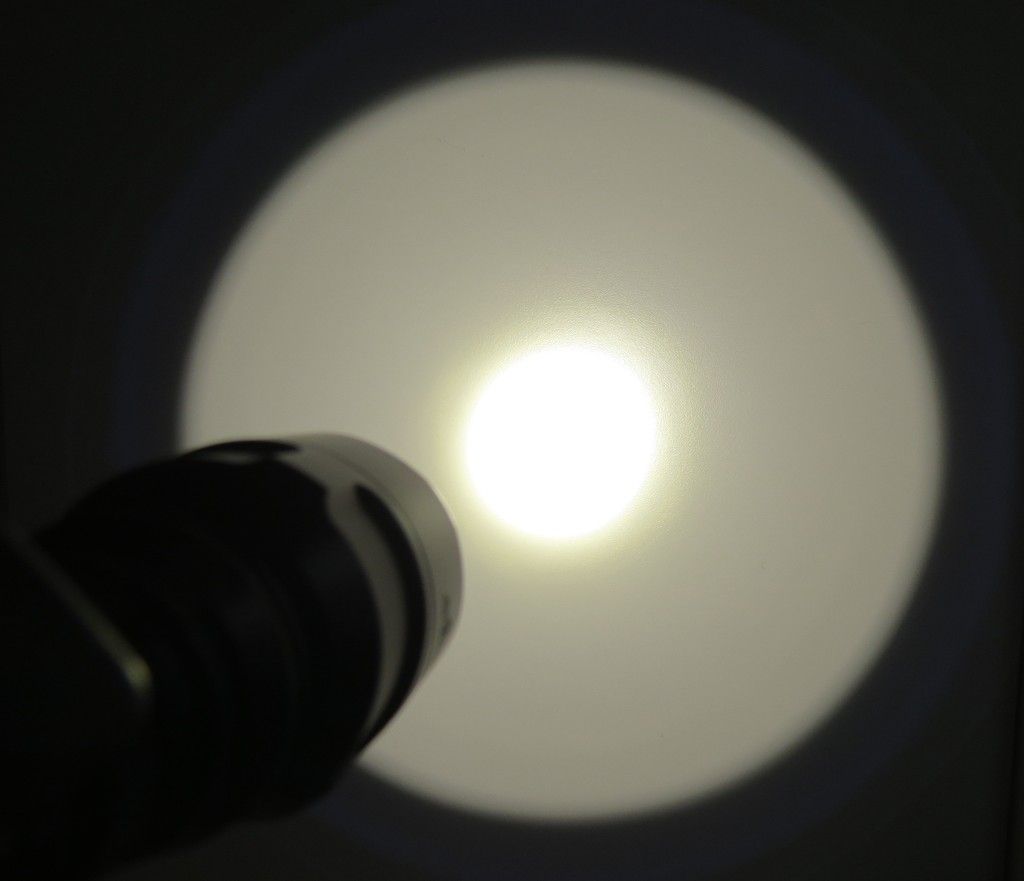
Outdoor Photos
All photos taken with the following Camera settings. F 2.7, Shutter 2.5s ISO 100
Location is at a park with the distant tree approximately 60m from the camera position.
HIGH Mode.
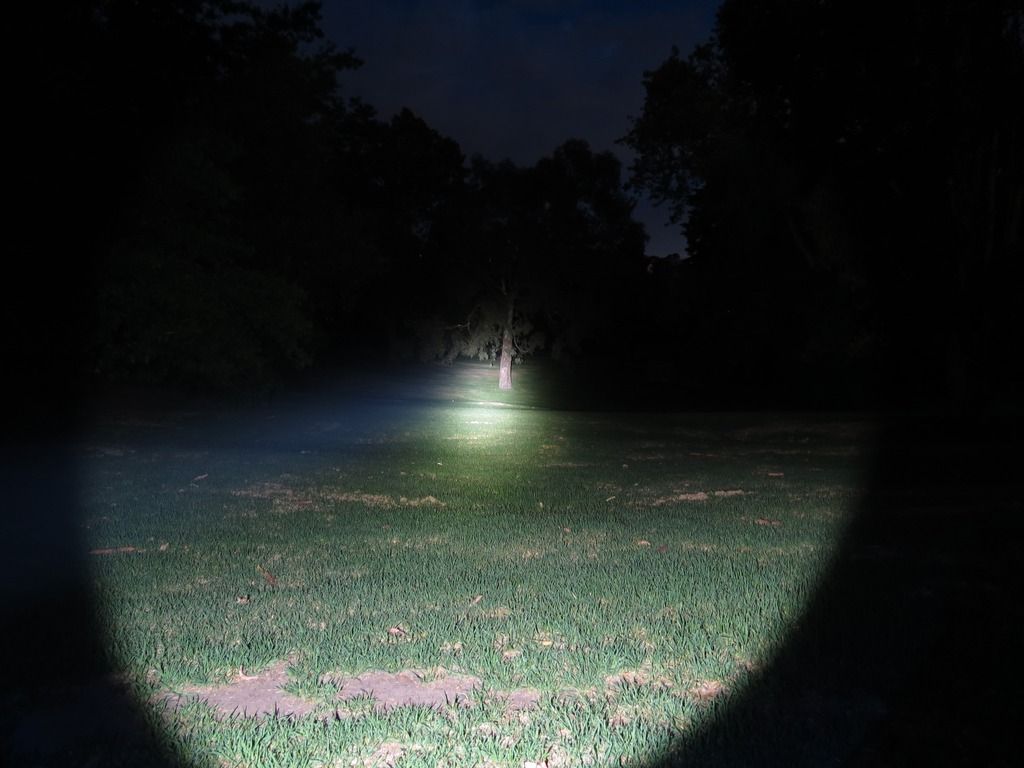
Medium Mode
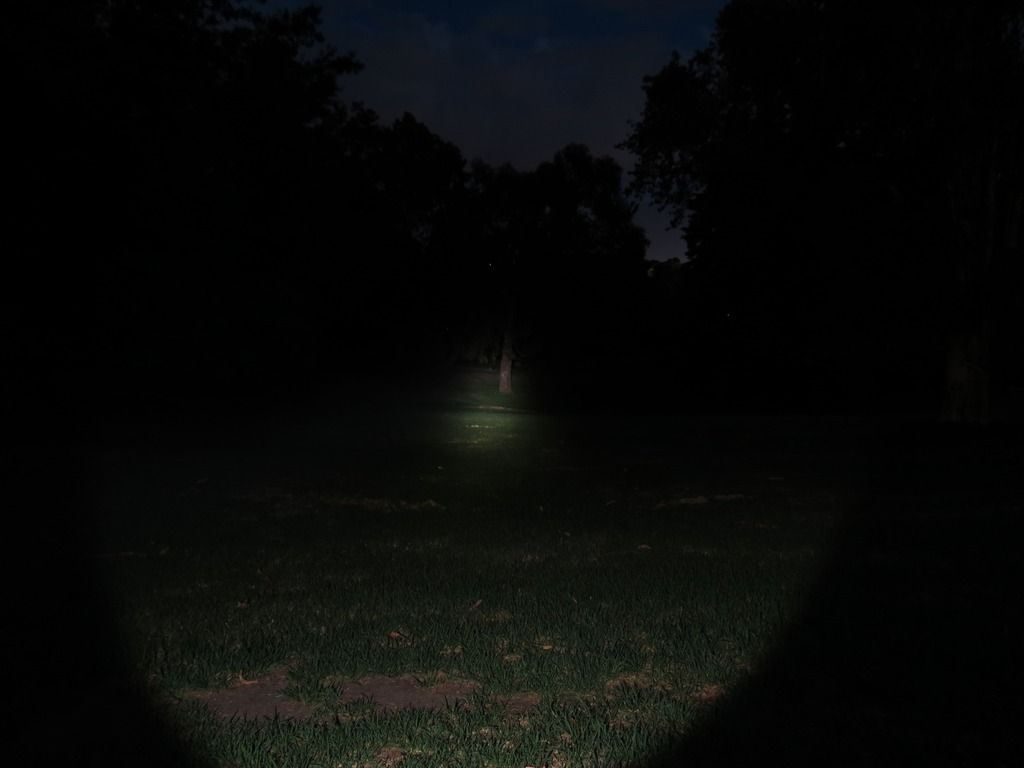
Low Mode
Light Output
Three performance tests were completed on the Qualilite D81, these are,
1. Ceiling Bounce test measurements
2. Run time test with a 18650 battery
3. Closer view of the first 15 minutes of the run time with temperature measurements.
Firstly the Ceiling Bounce test. The purpose of this test is to assess the amount of light produced. The results achieved are at the mid range of the scale when compared to other models listed. Performance is excellent for a C8. Also included in the results. Included in the chart is a new Convoy C8. It's performance is lower than expected for what should be a 2.8A XPL-HI. Possibly not what I expected. I've not checked the tail cap current as they may reveal the answer.
The score achieved with the D81 is very good. Not the highest performing C8 design I've tested but still very pleasing results.
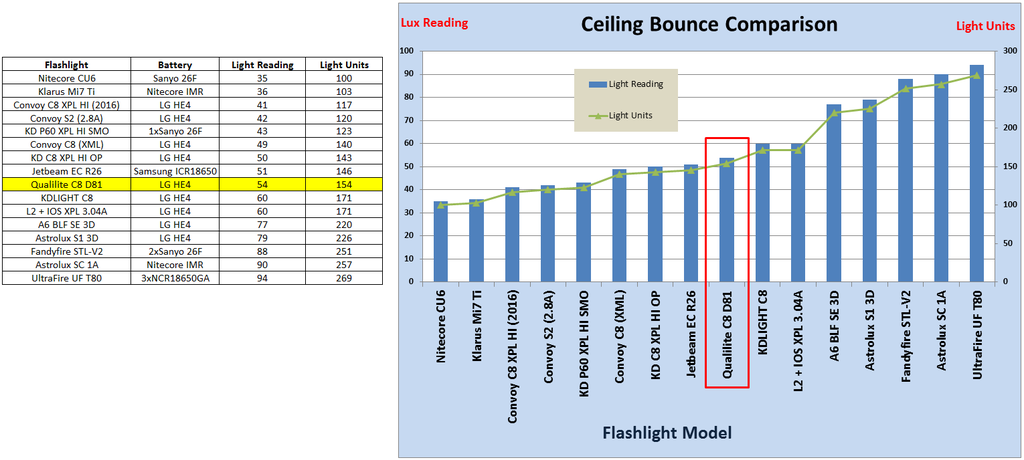
Next is a run time test using a freshly charged 18650 LG HE4 Lithium Ion battery.
All run time tests were executed with the flashlight mounted in a tripod spaced 1m from the light meter sensor. The flashlight and sensor were stationary for the full duration of the test. A video recording device was used then to record the session with all results recorded transferred to a a spreadsheet for charting purposes.
The run time test was run for 80 minutes. During this time the brightness measured dropped gradually from around 65,000 lux to just under 20,000 lux. The performance here is excellent for a C8. After 80 minutes the output was still very good. According to the manufacturers specifications the run time on high is 90 minutes. Based on my results I would expect this duration to be met comfortably.
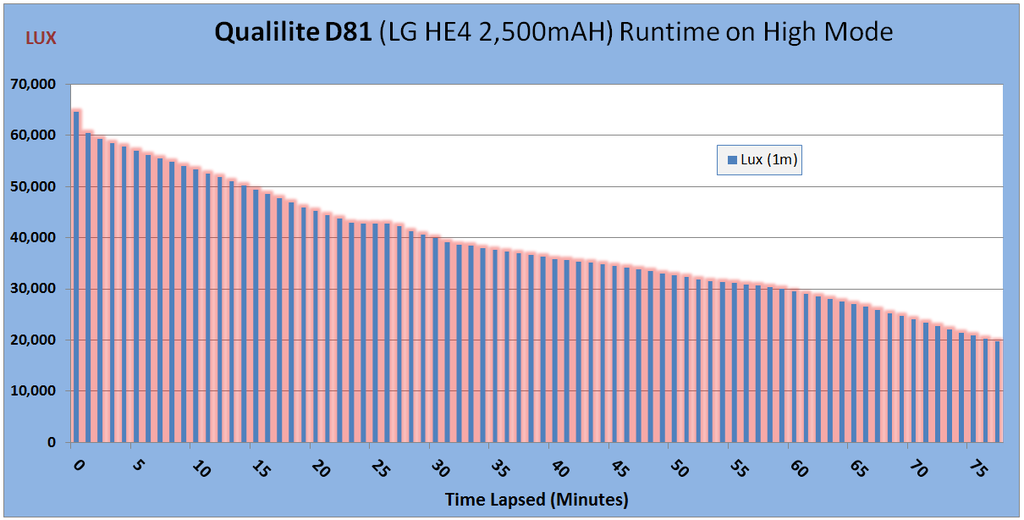
The chart below focuses on the first 15 minutes of the run-time chart above. During this time Temperature measurements were taken around the head of the flashlight. Two data samples are missing as I had originally planned a 10 minute temperature measurement period but decided to continue. The ambient temperature during testing was around 25C. As the run-time continued the flashlight head temperature did increase to almost 50C, peaking at around 47C at the 30 minute mark. It could be held but the head was very warm to hot.
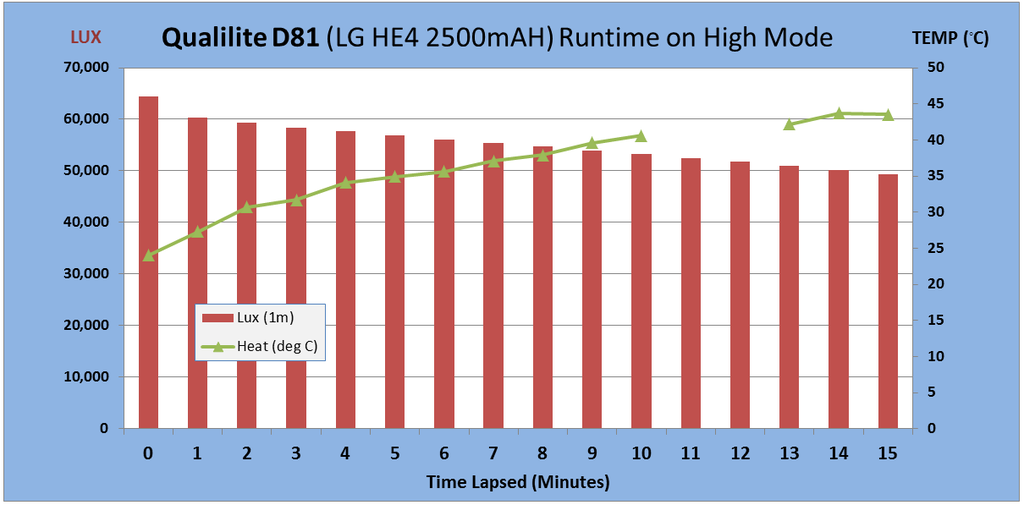
Current Measurements
The Current measurements on the highest setting were taken using a UNI-T UT204 clamp meter with a 12AWG wire with the tail cap removed. Actual current levels will be lower due to the resistance of the tail cap switch and spring. Figures below represent the peak measured
With the flashlight equipped with a 18650 battery the following measurements were recorded.
Low 0.5A
Medium 0.25A
High 2.8A
When 2xLCR16340 were used on High the current was measured at approximately 2.0A, brightness output was similar to that of a 18650 on HIGH.
User Interface
To turn on the flashlight requires one press of the rear switch. This will activate the last mode saved. To turn off the same switch is pressed again. I found the switch somewhat firm but it works exactly as needed.
The flashlight has 2 Groups of modes.
Group 1 - Low, Medium and High
Group 2 - Low, Medium High, Strobe and SOS,
To move between Group 1 and Group 2 requires cycling through the same group for 3 times continuously via half presses of the rear tail cap button.
Group 1 to Group 2
Lo > Med > Hi > Lo > Med > Hi > Lo > Med > Hi > (Group 2) Lo > Med > Hi > Strobe > S.O.S
Group 2 to Group 1
Lo > Med > Hi > Strobe > S.O.S > Lo > Med > Hi > Strobe > S.O.S > Lo > Med > Hi > Strobe > S.O.S > (Group 1)Lo > Med > Hi
This is an interesting approach to changing groups. Initially without instruction it wasn't clear but once known it's an effective way to manage moving between Groups without doing so accidentally.
Overall an effective UI that includes a good range of modes.
Final Summary
The Qualilite D81 is an excellent example of a C8 flashlight. It is a step up on many of the currently available C8's. Where I see this is that it has small extras that all amount to extra value in the overall product. The first to mention in performance. On High it performs extremely well. It's close to the brightest C8 that I've seen, only beaten by the KDLight C8. The XPL-HI V3 6500k version is probably even brighter, however many prefer the warmer tint as was tested in this review.
I consider this to be a high quality C8 with excellent performance.
At the time of writing this review the D81 was priced at $28.69 which is at the high end of the market for C8's but considering the quality and performance of this flashlight it represents very good value.
Pros:
>Very Good Quality
>Excellent Brightness and performance
>Can Tail stand
>IPX 8 Waterproof to 1m (not tested)
>Mode Memory
>Multiple mode groups
>Thicker walled components.
>18650 or 2xCR123
Cons:
>Lacking lockout
>Lacking a manual
>In the upper end of C8 prices.
*** Edit removed reference to possible glued driver module to reflector
